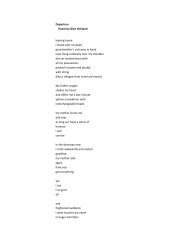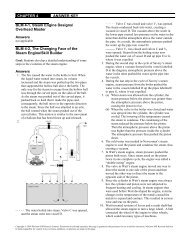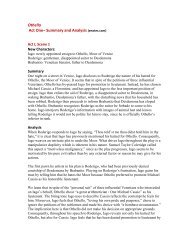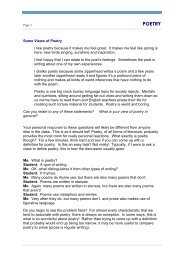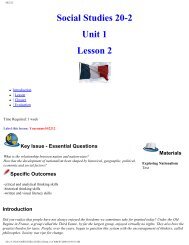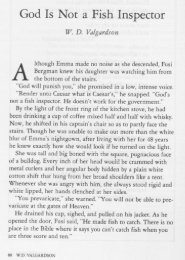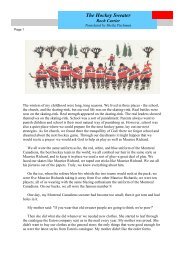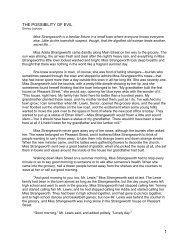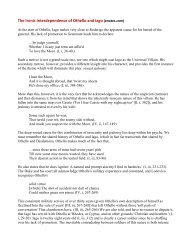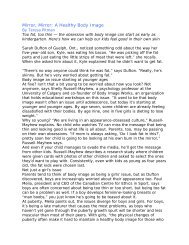You also want an ePaper? Increase the reach of your titles
YUMPU automatically turns print PDFs into web optimized ePapers that Google loves.
Page 1<br />
Other notes:<br />
Engl 206: Short Story<br />
Student notes on Munro, "<strong>The</strong> <strong>Shining</strong> <strong>Houses</strong>"<br />
narrative aspects interpretation theoretical aspects<br />
characterization: Mary's point of view<br />
encourages the reader to sympathize<br />
with her cause; she stands up for what<br />
she believes in;<br />
setting: "that house is bringing down the<br />
resale value of every house on the<br />
street": conflict between Mrs Fullerton<br />
and estate agent.<br />
emotions orient us towards both sides of<br />
case: Mary vs. other members of community.<br />
character: Mrs Fullerton developed in<br />
isolation from other characters; she is<br />
only discussed by them; thus associated<br />
with moral aspects of land development<br />
issue, not personalized through interaction.<br />
points of view: (1) inside Mrs Fullerton's<br />
house, exposed to her feelings; (2)<br />
across the street, community point of<br />
characterization: all are flat except for<br />
Mary<br />
point of view: story mediated through<br />
Mrs Fullerton's position coming first in<br />
story.<br />
• stereotyped characters and their stereotypical expectations of community are imposed over the idiosyncrasy<br />
of individualist Mrs Fullerton;<br />
• power struggle manifested in torn up hillside, violence of men's work on gardens, legal strategy to evict Mrs<br />
Fullerton; children's party an interesting mirror image reversal of this: constraint of flash cameras and<br />
birthday games, then they go wild;<br />
• reduction of values to money, what compensation Mrs Fullerton will get;<br />
• gender issue: individuals under attack, rendered powerless, happen to be the women: Mrs Fullerton and<br />
Mary; real power lies with the men, Carl and Steve, and their "lane deal."<br />
http://www.ualberta.ca/~dmiall/Winter2001/Munro.htm<br />
story centers around the issue of change in or<br />
threat to an existing community<br />
settles on the moral issue of one's right to<br />
force people out of their old community in<br />
order to bring in a new one.<br />
an exploration of human nature: exclusion of<br />
the individual as a result of group mentality<br />
and petty behaviour: cf. "And these were<br />
joined . . . each other for being drunk" (238).<br />
contrast of Mrs Fullerton's immobility vs. Mr<br />
Fullerton breaking away.<br />
two cultures, separate worlds: each refuses<br />
to take part in order to understand the other;<br />
shows conflict, power struggle<br />
inner world of self: Mary shows how she<br />
deals with the situation, "<strong>The</strong>re is nothing you<br />
can do . . . keep a disaffected heart" (239);<br />
-- prompts readers to examine what their<br />
stance would be, their own inner morals.<br />
"light of the flash": focus on the moment, no<br />
before or after; collective feeds off each other<br />
in the heat of the moment;<br />
remoteness from community: community vs.<br />
isolation of Mrs Fullerton (238)<br />
Mr Fullerton's youngness contrasts with Mrs<br />
Fullerton's age: represents change (new<br />
houses) vs. unchanging.<br />
character: stereotyped characters of community<br />
as young, idealistic, self-absorbed; no<br />
respect for traditional values and the elderly,<br />
except for Mary



